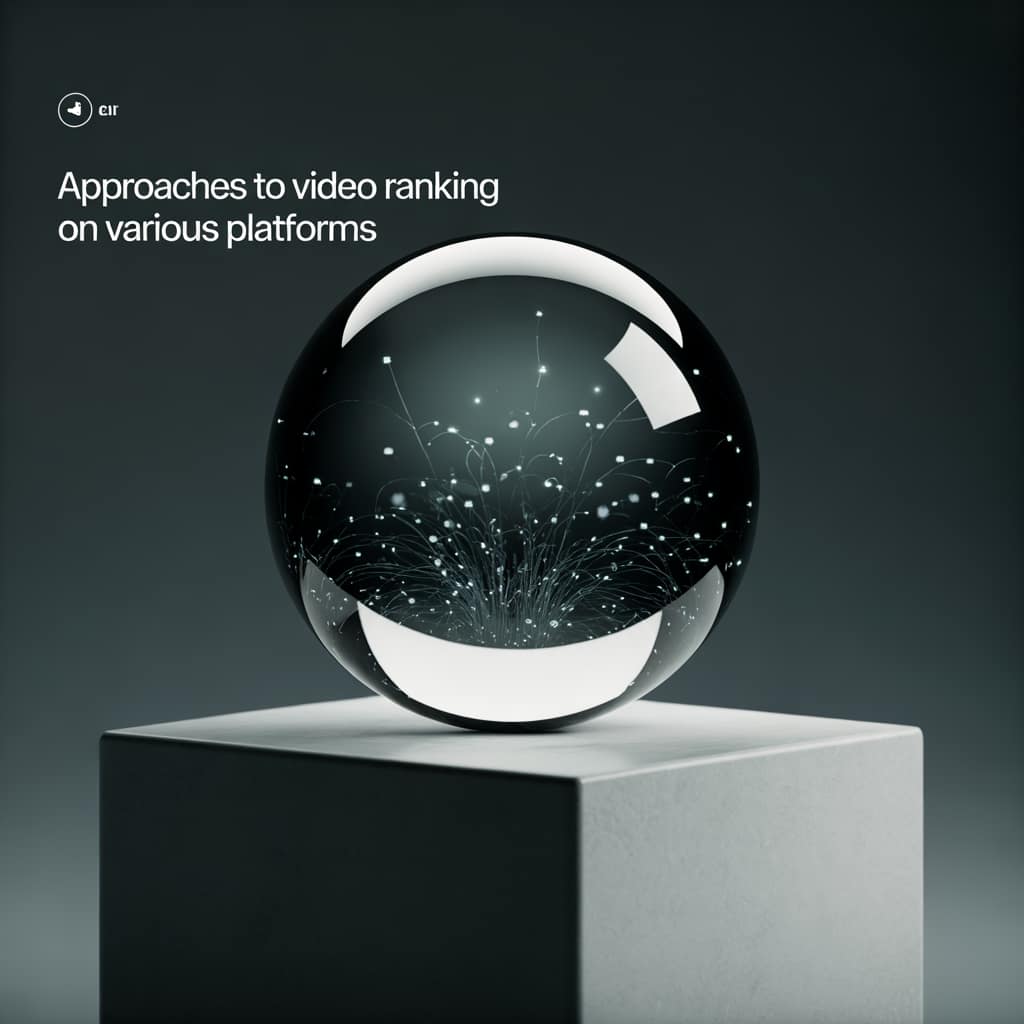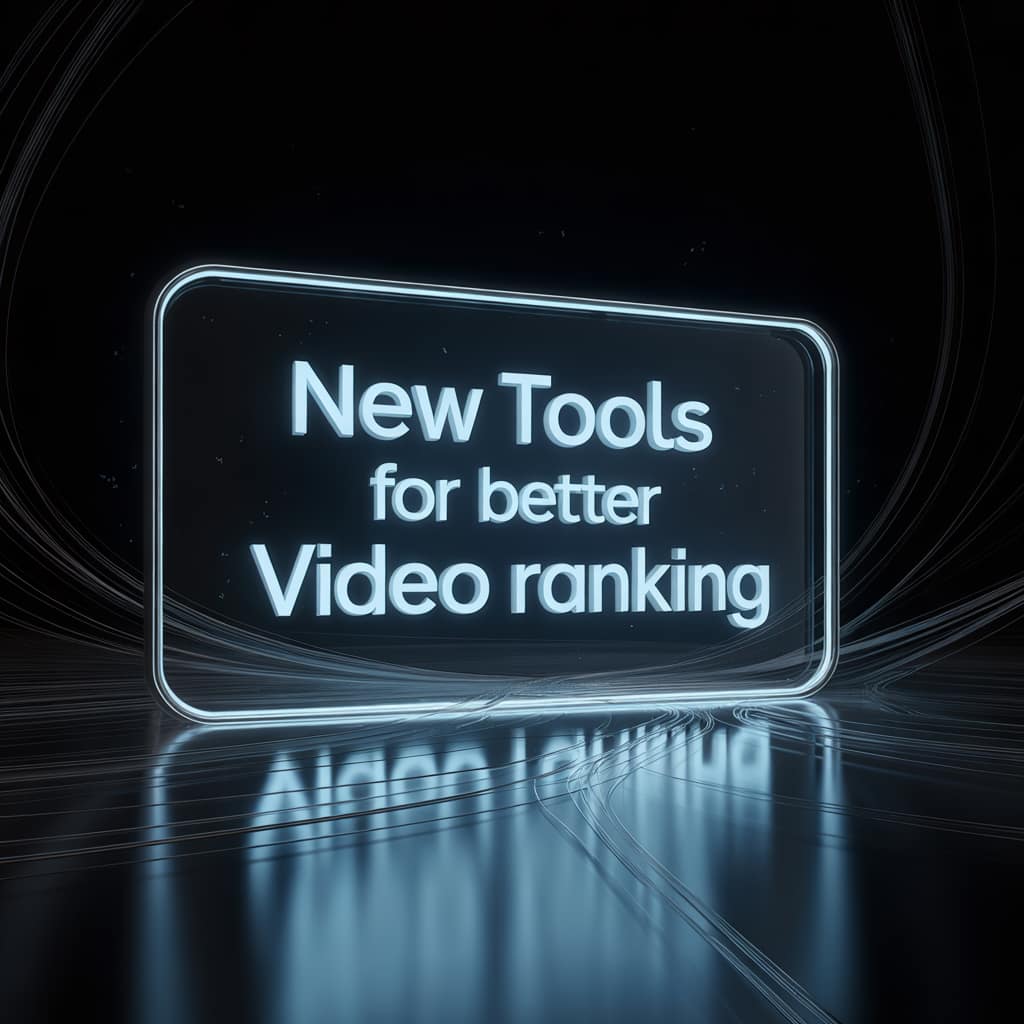
Table of Contents
Understand Video SEO Analytics
Video SEO analytics might sound like another buzzword thrown around in digital marketing, but it’s really your secret sauce to make your video content shine. Think of it as a tool that peeks into how your videos are performing across digital platforms. It’s about understanding the nitty-gritty of how people find, watch, and engage with your videos.
Seeing how videos have become the bread and butter of online content, figuring out how they work with search engines is a big deal. Whether you’re talking YouTube, Instagram Reels, or TikTok, video content has taken over our screens, making video SEO analytics an essential part of any digital marketer’s toolkit.
At the end of the day, the main goal of using video SEO analytics is maximizing reach and engagement, which basically boils down to understanding how your audience interacts with your content. By diving into these metrics, you can tweak and optimize your videos to better match what your audience is looking for, which means more views, likes, comments, and shares. Basically, it’s about making sure your awesome videos get the attention they deserve!
The Role of Video SEO in Digital Marketing
Video SEO isn’t just about boosting views, it’s a vital part of your overall digital marketing strategy. As Google’s algorithms grow smarter, they’re not only reading the text but are also analyzing video content. This means that a well-optimized video can dramatically improve your site’s visibility and overall search engine rankings.
Videos do more than entertain; they keep your audience engaged on your site longer. This longer engagement signals to search engines that your content is worth displaying prominently in search results. Plus, videos are more shareable on social media, widening your content’s reach and increasing overall brand awareness.
It’s important to see how traditional SEO and video SEO can play off each other. While traditional SEO might focus on keywords in blog posts and metadata, video SEO is all about how your video content aligns itself within search engines through video descriptions, tags, and engaging thumbnails. Combining the two can create a powerhouse marketing strategy.
In digital marketing, integrating video content with SEO strategies means you’re not just meeting your audience’s needs. You’re anticipating them and delivering content in the format they prefer. Stay ahead of the game by ensuring your video content ranks just as high as your written content, securing your spot in the ever-competitive online market.
Key Metrics in Video SEO Analytics
To get the most out of video SEO analytics, it’s all about understanding the key metrics that tell the story of your video’s performance. First up, views. It’s the most basic metric, but it gives you a quick snapshot of how many eyeballs you’ve got on your content. But don’t stop there; views only scratch the surface.
Watch time and engagement rates are where the real magic happens. Watch time goes beyond just counting views, diving into how long people actually stick around. The longer they watch, the higher your video ranks in search algorithms. Engagement rates, like comments and likes, show how actively viewers are interacting with your content. The more they engage, the better.
Retention rates are another crucial metric. This one’s all about figuring out if people are watching your videos all the way through or bailing halfway. High retention means your video is hitting the mark and keeping viewers interested.
Then there are social sharing metrics. Shares can send your video viral, expanding its reach far beyond your usual audience. Watching a video gain traction across platforms is the holy grail of video SEO analytics.
These metrics offer insights into not just what’s working, but where there’s room for growth. Focus on them, and you’ll have a clear path to optimizing your video content for better performance and broader reach.
Analyze Audience Behavior and Demographics
Understanding who’s watching your videos and how they behave is like unlocking the secret level in a game. The more data you gather about your audience, the better you can tailor your content.
Start by diving into viewership demographics. Knowing your audience’s age range, gender, location, and interests helps you create content that truly resonates. Imagine crafting a video that speaks directly to a segment, making them hit that share button.
Audience behavior analysis is the next step. This involves tracking how viewers interact with your videos. Look for patterns in what they’re watching, their click-through rates, and even the devices they’re using. These insights can revolutionize how you present your content.
Ever noticed how some of your videos perform better at certain times? That’s your time-of-day engagement pattern. Analyzing when your audience is most active means you can schedule releases for maximum impact. Posting at the right time can significantly boost engagement rates.
Getting a grip on these metrics means you’re not just shooting in the dark. You’re making informed decisions that help your video content stand out in a crowded market. It’s all about connecting with your audience on their terms.
Tools and Technologies for Video SEO Analytics
Choosing the right tools to analyze video SEO is like stocking up on the essentials before you hit the road. It’s all about picking platforms that fit your needs and help you get the best insights.
First up is Google Analytics, a classic that many swear by. It offers a comprehensive overview of how your site performs, including video metrics when you link it with YouTube. It’s a great way to see how your videos impact overall site traffic and engagement.
Then there’s YouTube Analytics, which digs deep into specific video performance on the platform itself. From audience retention to traffic sources, it provides insights right from the horse’s mouth.
Don’t overlook other tools like VidIQ or TubeBuddy. These are fantastic for keyword research, SEO score optimization, and even competitor analysis. They help you optimize your video’s metadata for better visibility.
When choosing tools, think about what you need most—whether it’s detailed demographic data, SEO optimization insights, or competitor benchmarks. Tools can be integrated to offer a more holistic view, allowing you to analyze video performance from different angles.
By leveraging these technologies, you’re not just tracking numbers. You’re shaping a data-driven strategy to optimize your videos for reach and engagement. It’s all about understanding what works and tweaking what’s not.
Optimize Video Content for Better Analytics
Your video content might be amazing, but making sure it reaches the right audience requires some smart optimization strategies. Quality is king, and starting with high-definition videos can make a huge difference. Crisp visuals capture attention and keep viewers watching longer.
Keywords and tags in your video content are your best friends. Just like in traditional SEO, they help search engines understand what your video is about. Do some keyword research before you hit that record button and sprinkle those keywords naturally in your video title, description, and tags.
Don’t underestimate the power of a catchy and descriptive video title. It’s often the first thing viewers see, so make it count. Be clear about what your video offers. A strong title can be the difference between a viewer clicking that play button or scrolling past.
Video descriptions aren’t just for show—they’re a goldmine for optimizing content. Use them to provide a detailed summary of your video, incorporating those important keywords. Not only does this help search engines, but it also gives viewers a sneak peek of what’s in store.
Optimizing your video content isn’t about gaming the system; it’s about making sure the right people find and engage with your content. By focusing on these aspects, you set your videos up for success, boosting their visibility and effectiveness across platforms.
Case Study? Success Stories in Video SEO
Looking at success stories can offer massive inspiration and guidance for your own video SEO journey. Take a look at brands that have nailed their video SEO strategy. Companies like Red Bull and GoPro have not only won over their niche audiences but rocked the SEO world with their video content.
Red Bull’s approach is all about creating high-energy, captivating content that speaks to extreme sports fans. Every video is optimized with descriptive titles, compelling thumbnails, and the right tags, making them easily discoverable by search engines and viewers alike.
GoPro, on the other hand, leverages user-generated content to boost engagement. By encouraging users to share their adventures, they’ve built a library of optimized videos showcasing their products in action. Each upload is meticulously tagged and optimized to reach wider audiences.
The lessons here are all about creating content that resonates while being carefully structured for discovery. Analyze these strategies and incorporate similar practices in your own video SEO efforts, adapting them to fit your brand’s unique voice and audience.
These companies didn’t just get lucky. They’ve honed their strategies over time, using analytics to iterate and improve. Learning from the pros can fast-track your video SEO success, setting you up to create content that not only reaches but resonates.
Challenges and Limitations in Video SEO Analytics
Let’s face it, every solution has its own set of challenges and video SEO analytics is no different. One common hurdle is getting accurate data. Video platforms don’t always provide full transparency, leaving gaps in your analytics that you have to navigate. It’s like trying to complete a puzzle when you’re missing a few pieces.
Data privacy is another tricky issue that’s been getting more attention lately. With increasing concerns about user privacy, access to detailed viewer analytics can sometimes be limited. This can put a dent in your efforts to get a complete picture of how your audience engages with your content.
Then there’s the issue of interpreting the data correctly. With so many metrics to consider, it’s easy to fall into the trap of information overload. Picking out which data points are genuinely useful for driving results requires a lot of practice and understanding. Misinterpretation can lead to misguided strategies.
Accuracy can also be a concern, especially with third-party tools that don’t always sync perfectly with native analytics from platforms like YouTube or Facebook. It’s crucial to validate data accuracy across sources to ensure you’re working with correct information.
Despite these challenges, overcoming them is part of mastering video SEO analytics. By staying aware and adapting to these limitations, you can continue to optimize and refine your strategies, ensuring they’re grounded in sound data and geared towards success.
Future Trends in Video SEO and Analytics
Video SEO and analytics are not static fields; they’re constantly evolving with tech advancements and consumer behavior shifts. Keeping an eye on future trends can help ensure your strategies are always ahead of the game.
One trend to watch is the rise of voice search. More people are using smart speakers and virtual assistants to find content, which means optimizing for voice queries could give your videos a competitive edge. Think about how people talk and phrase their queries when optimizing video titles and descriptions.
Artificial Intelligence (AI) and machine learning are also making waves in video SEO. AI tools can help analyze large datasets more efficiently, providing deeper insights into viewer preferences and behavior patterns. Leveraging AI could mean faster and more accurate analytics, letting you fine-tune your content strategy more effectively.
Expect more immersive content formats, such as 360-degree videos and virtual reality (VR), to gain traction. These formats engage viewers in new ways but also come with their own set of SEO challenges. Understanding and adapting to how these new formats affect video discoverability will be a key part of staying relevant.
Consumer behavior is another area to keep tabs on. With emerging platforms and shifting social media trends, knowing where and how your audience prefers to consume video content will be more important than ever.
By anticipating these changes and staying flexible in your strategies, you can align your content with where video SEO is headed, ensuring your content reaches and resonates with the evolving digital audience.
Get in touch
For optimal video SEO, it is crucial to strike a harmonious equilibrium and execute tactics that correspond to your unique content and intended viewership. Don’t hesitate to contact us for a customized estimate and elevate your video content to unprecedented levels of accomplishment.
First steps as a vlogger?
Visit Vlogsuite with tips and tools for vloggers
Wishing you the best of luck in achieving the top position!
May you soar to rank #1 and celebrate your success with joy and excitement! 🚀 🏆🎉
Good luck ✨









